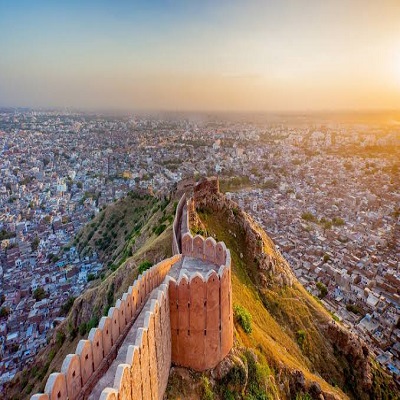
In the Indian state of Rajasthan, the Nahargarh Fort is perched on the brow of the Aravalli Hills and commands a view of Jaipur. Nahargarh, together with Amer and Jaigarh forts, previously served as the city's formidable defence ring. Formerly known as Sudershangarh, the fort later adopted the name Nahargarh , which means "abode of tigers." The name Nahar is thought to refer to Nahar Singh Bhomia, whose ghost is said to have haunted the area and prevented the fort's completion. By creating a temple in his honour inside the fort, which later came to be known by his name, Nahar's soul was soothed.
Built mainly in 1734 by Maharaja Sawai Jai Singh, the king of Jaipur, the fort was constructed as a place of retreat on the summit of the ridge above the city. Walls extended over the surrounding hills, forming fortifications that connected this fort to Jaigarh, the fort above the old capital of Amber. Though the fort never came under attack during the course of its history, it did see some historical events, notably, the treaties with the Maratha forces who warred with Jaipur in the 18th century.[4] During the Indian Mutiny of 1857, the Europeans of the region, including the British Resident's wife, were moved to Nahargarh fort by the king of Jaipur, Sawai Ram Singh, for their protection. The fort was extended in 1868, during the reign of Sawai Ram Singh.
Until April 1944, the Jaipur State government used for its official purposes solar time read from the Samrat Yantra in the Jantar Mantar Observatory, with a gun fired from Nahargarh Fort as the time signal. Some scenes in the movies Rang De Basanti, Shuddh Desi Romance and Sonar Kella were shot at Nahargarh Fort.